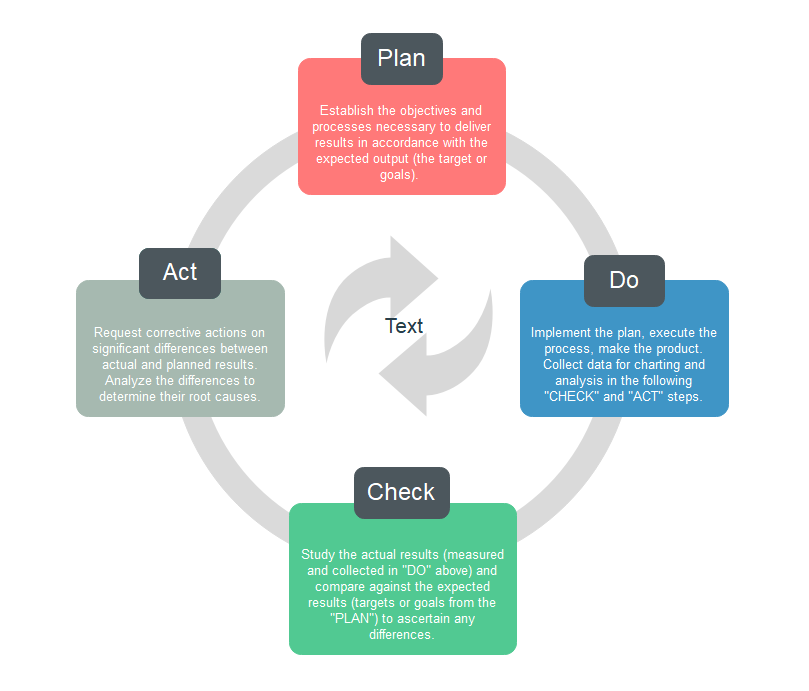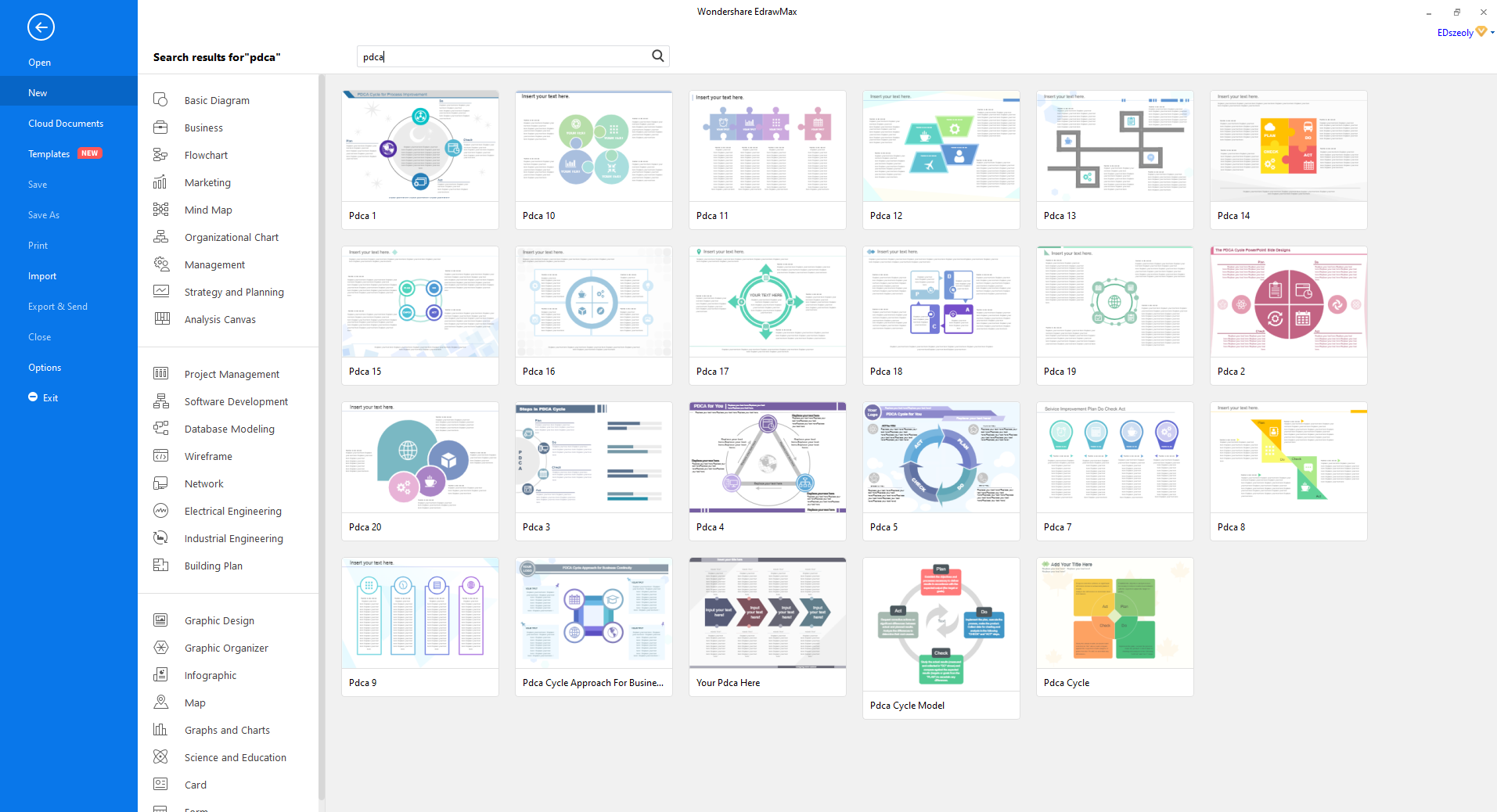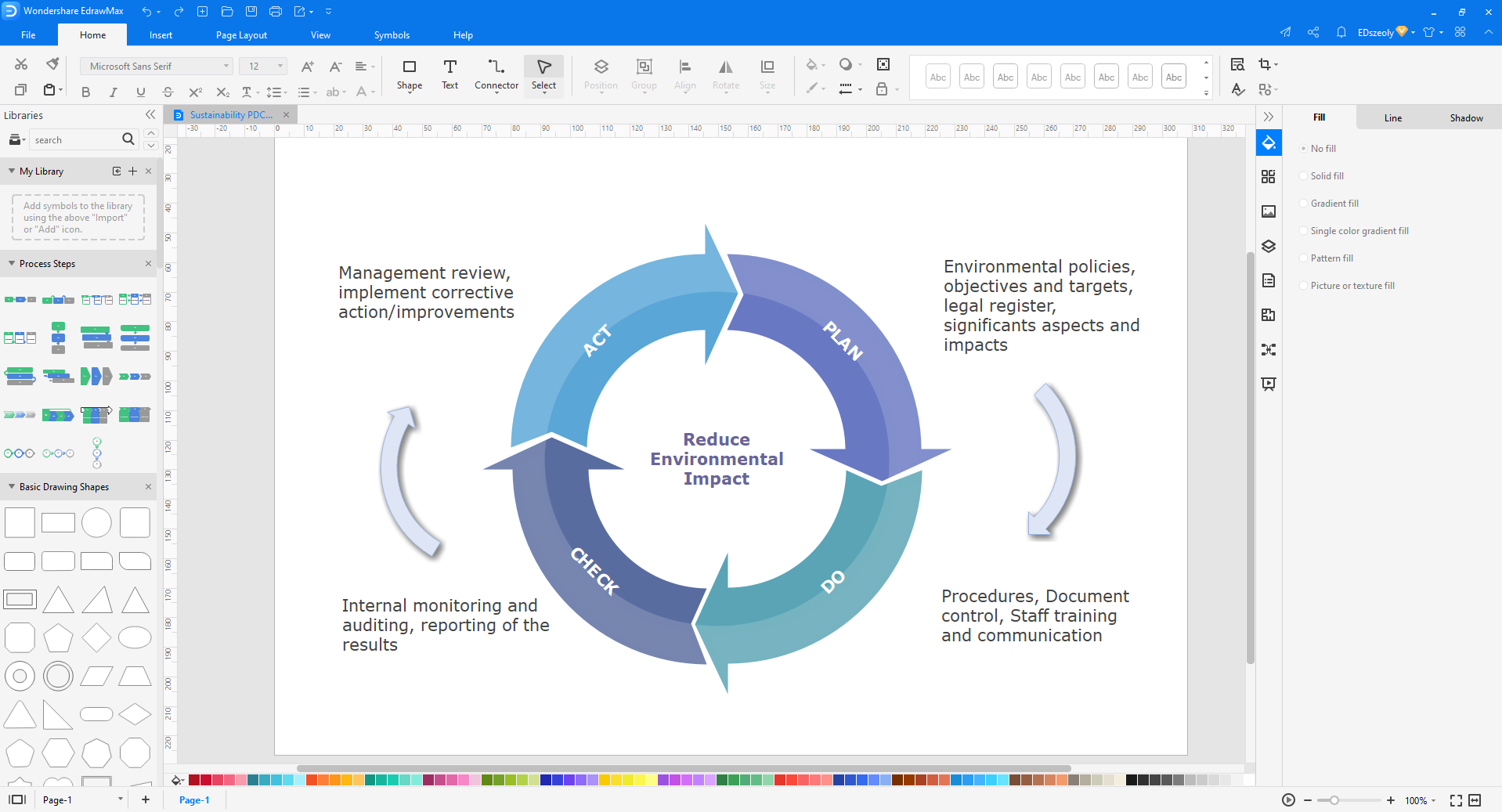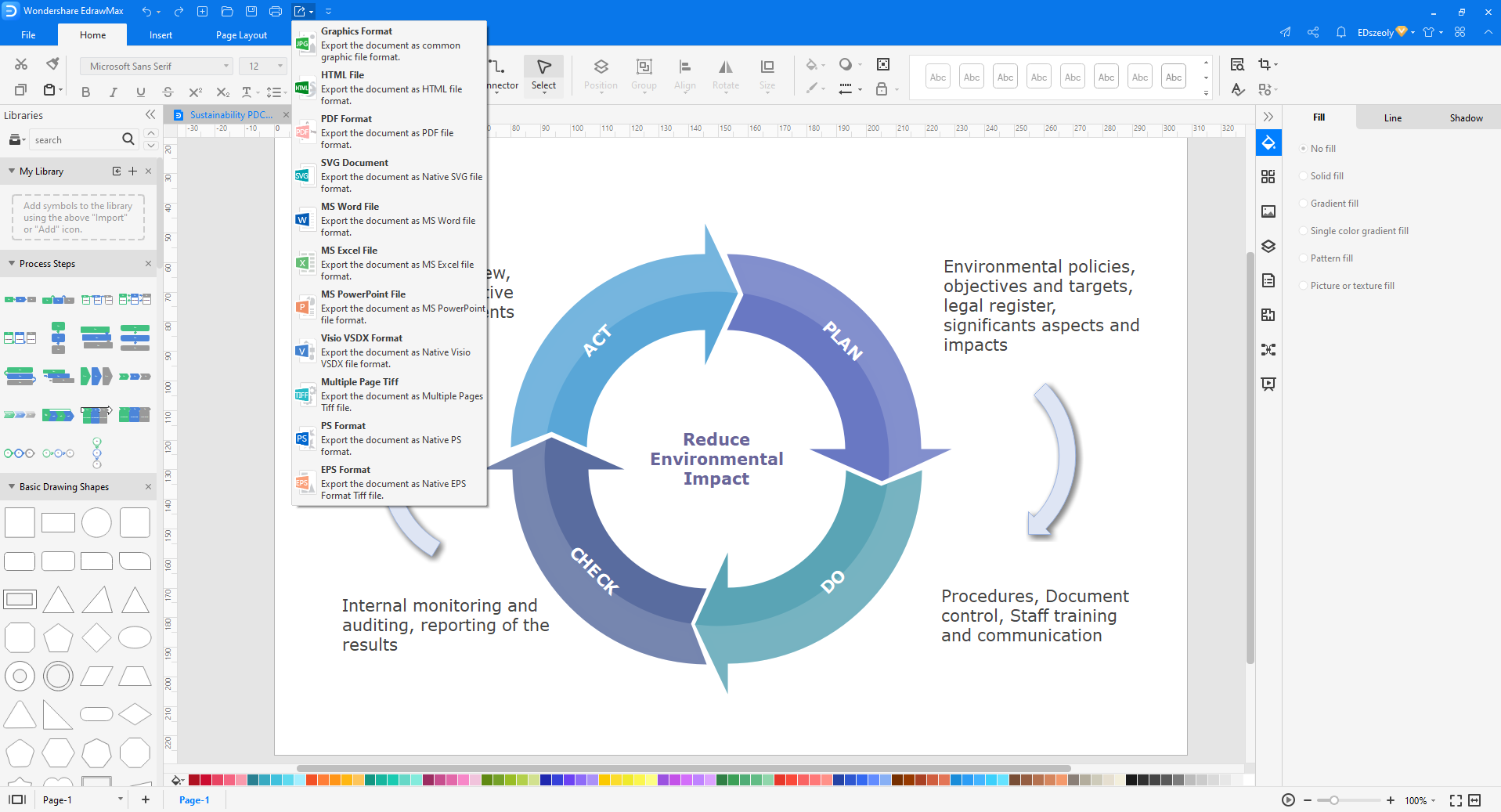Envision that your consumer loyalty score on a business rating website has plunged. When you see ongoing remarks, you see that your clients are griping about late conveyance and that products are being harmed on the way.
Thus, you choose to run a small pilot project for a month, utilizing another provider to convey your products to an example set of clients. What's more, you're satisfied to see that the input is positive. Thus, you choose to utilize the new provider for every one of your orders later on.
What you've pretty recently done is a single solitary loop called the PDCA (Plan-Do-Check-Act) Cycle. This is a setup instrument for accomplishing persistent upgrades to your business. We should discover how you can utilize this great strategy to improve your group’s critical thinking meetings.
What is PDCA?

PDCA (Plan-Do-Check-Act) is viewed as perhaps the most well-known system for persistent improvement of business measures. PDCA (plan-do-check-action), otherwise called the Deming Cycle, is the most straightforward structure for measure improvement. Fundamentally, it's a progression of input cycles of constant improvement — you choose how it functions, sort out some way to improve it, ultimately make changes, and continue to rehash the cycle. I trust PDCA is the least complicated and best approach to assist you with improving your work process.
It tends to be utilized by groups to handle issues, discover answers for them, and improve business measures. Numerous associations use the PDCA model to arrange their quality improvement endeavors. One thing you need to recollect when utilizing the PDCA (Plan-Do-Check-Act) cycle is to be very convenient because it provides constant interaction instead of starting to finish measure. Consequently, it never closes; the means should be rehashed and again for persistent improvement.
The Four Phases of the PDCA Cycle
The Deming Cycle is a four-section executive's approach that advocates continuous improvement. This and other comparable ceaseless improvement models have been incorporated into business and undertaking or deft turn of events.
The PDCA (Plan-Do-Check-Act) cycle is a spry advancement measure for quality administration in a winding mode and the cycle proceeds. It is an iterative and steady improvement measure, not a one-time measure.
- Plan
- Do
- Check
- Act
To start with, recognize and comprehend your concern or opportunity. Maybe the norm of a completed item isn't sufficiently high, or a part of your advertising interaction ought to improve results. Investigate the data accessible in full. Create and screen thoughts, and foster a robust implementation plan. Make sure to express your prosperity standards and make them as quantifiable as could be expected. You'll get back to them later in the Check stage.
Whenever you've distinguished a possible arrangement, test it securely with a limited-scale pilot project. This will show whether your proposed changes accomplish the ideal result – with insignificant interruption to the remainder of your activity on the off chance that they don't. For instance, you could arrange a preliminary inside a division, in a restricted topographical region, or with a specific segment. As you run the pilot project, accumulate information to show if the change has worked. You'll utilize this in the following stage.
Then, investigate your pilot venture's outcomes against the assumptions you characterized in Step 1 to evaluate whether your thought was a triumph. On the off chance that it wasn't, get back to Step 1. On the off chance that it was, advance to Step 4. You may choose to evaluate more changes and rehash the Do and Check stages. In any case, if your unique plan indeed isn't working, you'll need to get back to Step 1.
This is the place where you execute your answer. However, recollect that PDCA/PDSA is a loop, not a cycle with a start and end. Your improved cycle or item turns into a new pattern, yet you keep searching for approaches to make it far and away superior.
EdrawMax
All-in-One Diagram Software
- Superior file compatibility: Import and export drawings to various file formats, such as Visio
- Cross-platform supported (Windows, Mac, Linux, Web, Android, iOS)
Purpose and Benefit of Using PDCA Cycles
The benefit of PDCA is listed as following:
- A critical thinking technique that gives a fast method to track down a powerful arrangement.
- Guarantee consistent, continuous improvement
- Everything being equal can be executed in organizations and is not difficult to adjust and carry out.
- Set out the freedom to continually screen the viability of an executed venture.
- Identify any dangers or issues on schedule before they lead to any monetary misfortunes.
- Increment familiarity with the workers about the interaction and the job they play in it.
Notwithstanding, it additionally includes a few drawbacks. The PDCA (Plan-Do-Check-Act) interaction requires all the individual dependents, which would end up being very troublesome on the off chance that they are more associated with different tasks. Further, it includes various advances that range from analysis to testing. In this way is anything but an incredible instrument for taking care of critical issues.
What to Do before Creating PDCA?
There are some things you need to know about before you sit and make a PDCA cycle. Following are some of the things you should perform to make a perfect PDCA (Plan-Do-Check-Act) cycle;
- Break down the current circumstance and discover the current issues;
- Break down the reason or impacting components of the problem.
- Discover the fundamental driver of the issue or the primary factor influencing;
- Foster measures and proposes action plans.
- Carry out an action plan
- Assessment results (analysis of information)
- Normalization and further advancement
Significantly, you do not want to gander at everything from an individual viewpoint; however, as a business person, consistently think in both minor and massive PDCA cycles and act in like manner. As far as you might be concerned, the accompanying proverb should always be in a closer view.
How to Make PDCA diagram in EdrawMax?
EdrawMax has made making graphs and cycles more enjoyable rather than a time and soul-consuming, soul-consuming task. With countless formatting tools and free creative space with pre-made templates that will assist you with your PDCA (Plan-Do-Check-Act) cycle. You can also make one from scratch by following some of the simples’ steps;
Step 1: Open EdrawMax on your desktop and go to the search bar. Type the PDCA cycle into the search bar and enter. You will find countless charts and templates from which you can choose the one that fits your requirement.

Step 2: Now that you have your cycle, you can put up your data and requirements. You can also format the cycle with countless formatting tools that EdrawMax provides to make your diagram more eye-catching.

Step 3: Once you are satisfied with your diagram, you can save or export it to your computer in any form.

Tip for Making PDCA
The PDCA (Plan-Do-Check-Act) cycle is a constant planning loop, doing, checking (or examining), and acting. It gives a straightforward and viable methodology for tackling issues and overseeing change. The model helps test improvement measures on a limited scale before refreshing strategies and working practices.
- Comprehend client assumptions
- Do extensive research
- Indicate the issue related to the interaction
Recognize the particular requirements of both outside and inward clients. What do they need, when, where, which is very troublesome because it provides amounts, and so on.
For instance, it very well may be brought about by neglecting to meet client assumptions, longer cycle time, absence of assets, and so forth.
For instance, it very well may be brought about by neglecting to meet client assumptions, longer cycle time, absence of assets, and so forth.
The methodology starts with a Planning stage in which issues are recognized and perceived, and a hypothesis for development is characterized. Potential arrangements are tried on a limited scale in the Do stage, and the result is then examined and Checked.
Go through the Do and Check stages however many occasions as necessary before the whole cleaned arrangement is carried out in the Act period of the cycle.
PDCA Diagram Example

The PDCA (Plan-Do-Check-Act) cycle can be utilized in a wide range of circumstances. For instance, when planning to change the provider of an item or administration or execute another security program inside an office. A typical model frequently used to outline the PDCA cycle is the point at which a planning group is planning for another item improvement.
See more free PDCA templates and download for customization.

